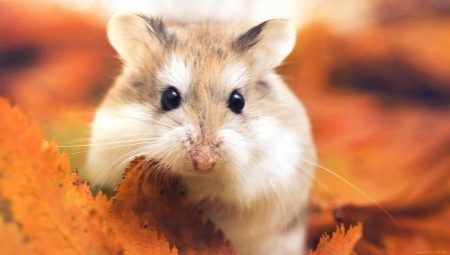The hamster is a cheerful pet; it can be brought at home and kept in a cage. Hamsters are soft and fluffy, they are loved by children and adults, animals are not too capricious in care, and they are inexpensive. The only drawback is their short life.
Life cycle
As a rule, hamsters can live both in the wild and at home. Moreover, the duration of their existence will be different.
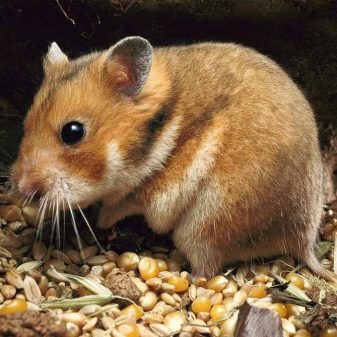

At home
In a residential environment, a hamster can live longer than in the wild. In addition, the life cycle of a pet depends on the care and care of the owner. Different breeds of hamsters live a different life cycle.
- Syrian are large, they have good immunity, they live about 3-4 years.
- The Dzungarian hamsters have a body length of 11 centimeters. They are very sociable, but at the same time they feel too much change in conditions. For example, such animals can get stress if they are moved from a cage or another hamster is hooked there. If the hamster of this breed lives in nature, then its life cycle will be 13 months, and at home the baby will be able to live for about 3 years.
- Dwarf hamsters are lightweight, they are sensitive to various diseases. It is important for them to choose the right food. At home, "dwarfs" can live for about 2 years.
- Siberian hamsters look similar to Dzungarian ones. These are very active pets, whose life cycle is 3 years.
In wild nature
In the wild, the life cycle depends on the type of hamster - some live 2 years, and some can live 7 years. In the natural habitat, these furry inhabitants are least likely to live to old age, even if they lead an active lifestyle.
There are many predators, for example, eagles or snakes that eat hamsters. First of all, cubs may die. But even older individuals are food for predatory animals and birds. For this reason, the average the duration of the hamster in the wild is about 1.5-2 years.
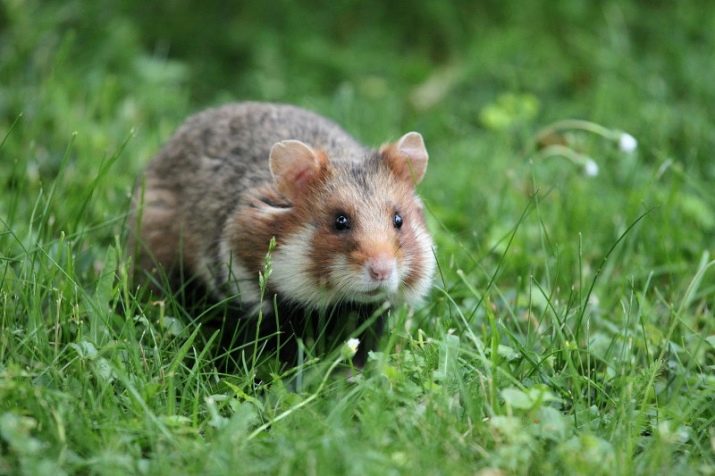
What determines the life span?
The life span of a small pet is determined not only by its breed or species. Home hamsters are very important care, as well as proper nutrition.
Care
It is imperative to keep the cells clean. Remove leftovers that may deteriorate daily. For example, fruits or pieces of meat in the heat can slowly rot, leading to health problems. Also check corners and heaps where the hamster can store food for later.
The bottom of the house must be well covered with filler. You can purchase corn or cellulose fillers. The pet needs constant care, every day you need to remove the wet filler and insert fresh. Animals are clean and can relieve themselves in one place. General cleaning and washing the cage should be done 4 times in 30 days.
If you constantly conduct general cleaning, then the hamster will begin a nervous breakdown.

You can provide your pet with a playground, labyrinths of tunnels. If the hamster wants to move around the apartment, then he needs to walk in a walking ball. If there is no walking ball, then the hamster may be in danger: it gets stuck somewhere, it will be pinched by the door, it will fall, eat poisonous plants, it will be able to gnaw through the electric wire. Keep in mind that a runaway hamster is very difficult to catch.
Do not leave the animal for a walk on tall objects such as a table or sofa. Some owners walk the hamster in nature, but an animal that has grown at home can be subjected to extreme stress or become ill.
If you let the pet go for a walk in nature, then, of course, he will be in danger. There he is trapped by such predators as a dog, cat, rat, crow. The pet will easily run away, but will be lost. The environment is not suitable for a petfor example, wet, grass or hot sun will affect the animal badly.
There are always parasites on the ground and grasses that can infect the hamster.
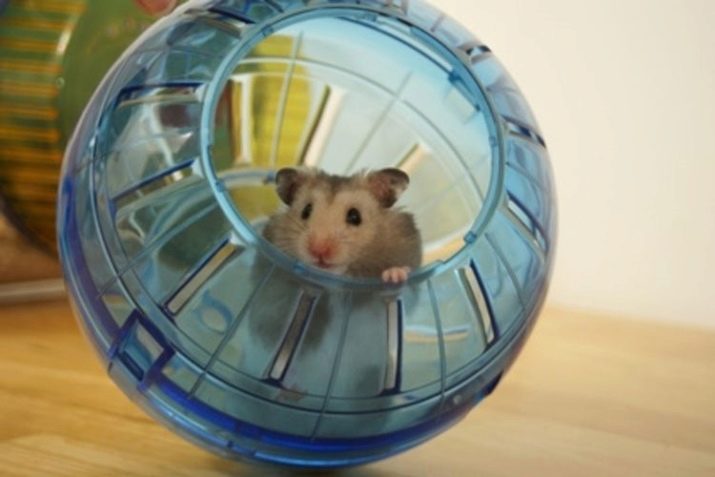
Food
A pet needs a balanced diet that has vitamins and minerals. Before buying, be sure to ask what foods should be given to the animal.
You can feed your walnuts and peanuts, but you can’t include almonds in the diet, as hazelnuts may contain harmful elements. It is not forbidden to give many vegetables, except for cabbage. An additional additive is mineral stoneThanks to this, the animal can get mineral elements. Also, mineral stone helps the animal grind down its incisors.
In general, the main part of the diet is cereals. You can purchase special mixtures at the pet store. There are vitamins in expensive formulations. The pet can eat fruits and vegetables that need to be cut into small pieces. You can give a large piece of vegetable so that the hamster grinds his teeth.
Boiled chicken breast, eggs, insects, low-fat cottage cheese, seeds and nuts are quite suitable for a hamster.
But do not give the animal meat every day, just offer it 3 times a week. All products that quickly deteriorate must be removed from the hamster’s home after 7-9 hours so that the animal does not poison.
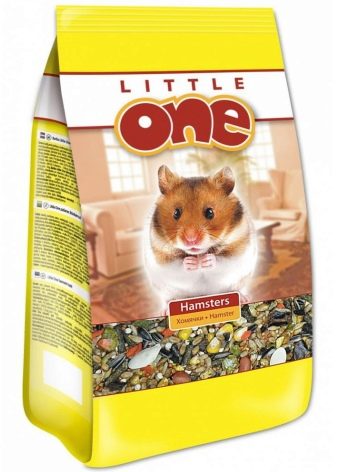

Hamsters should also not be given citrus fruits, potatoes, or exotic fruits.

Diseases
If there is no doctor nearby, then the owner of the hamster needs to know the symptoms of the diseases and their treatment. All processes inside the animal’s body pass quickly, so you need to study the rules in advance that will help the pet with the disease.
Diseases can be divided into two types: infectious and non-infectious. There are diseases that have similar symptoms.
First of all, the owner must understand what is happening with the hamster. If the animal is healthy, then it leads an active lifestyle and eats well. In healthy pets, the coat should be dry, thick, shiny and smooth, and the eyes should be clear and clean.
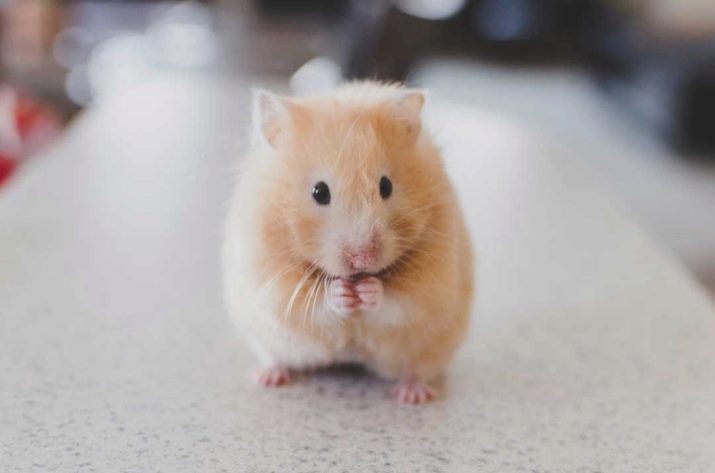
An ill hamster has the following symptoms:
- the appetite is impaired: the hamster completely or partially refuses to feed, selectively eats food, his thirst increases;
- saliva flows abundantly - there is wet hair on the chin, neck, chest;
- the animal has diarrhea - the back half of the body has wet coat or traces of feces;
- in addition to diarrhea, there may be constipation - the stool is dry and hard or absent altogether;
- eyes are watery or pus is released from them;
- difficulty breathing, mucus and wheezing is released from the nostrils;
- there are skin problems: the coat is dull, peeling, has bald spots, sores;
- the hamster becomes lethargic, moves a little, constantly lies;
- the nervous system deteriorates - coordination is disturbed or convulsions appear;
- the body becomes swollen.
If there is any violation of the pet’s daily routine, then this will cause concern and examination of the animal.
The owner will always be able to understand whether the pet is sick or not, because only he knows the habits and characteristics of his hamster.
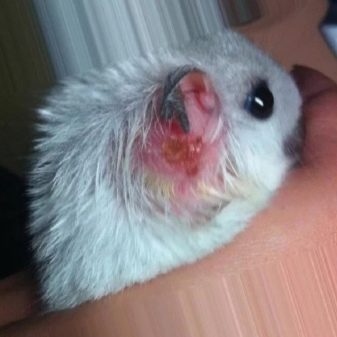
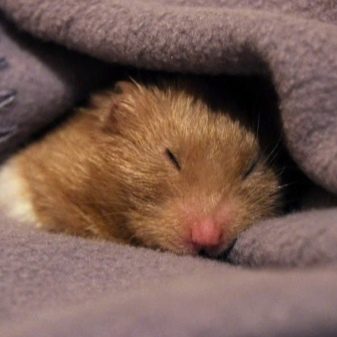
Which breeds live longer?
Breed and genetic predisposition can affect hamster life span. If the pet’s family had animals that lived for a long time, then it is likely that this hamster will also live longer than its relatives. Before buying a small animal, you need to find out about the pedigree of the pet, find out about the parents of the animal, about their health, about the diseases, if any. These signs will help to get a good animal that will live long.
Important! Long-lived hamsters are animals that are 3-4 years old. There were times when a Syrian hamster could live 7 years. In the wild, animals can die in a year and a half, because they are not able to adapt to natural conditions, and become food for predatory animals. Syrian hamsters are large, and because of this they can be confused with guinea pig. The average length of the animal is 14-16 centimeters, their mass is 111-126 grams. The animal has a golden yellow or tan color.
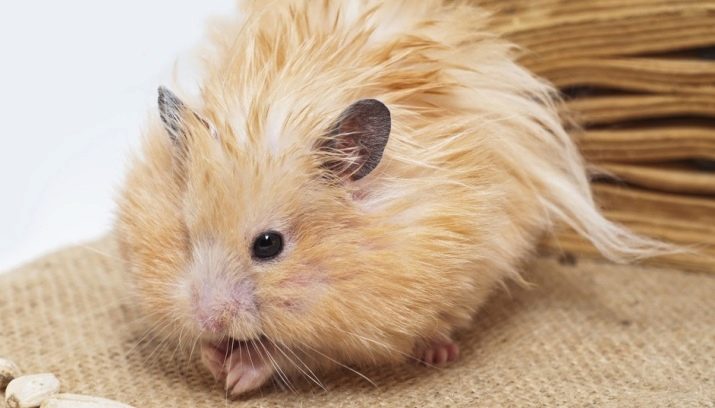
Animals of this breed have a habit of storing food in cheek bags. Due to this process, the cheeks may enlarge. These pets have good immunity, they rarely get sick. In order for the animal to live longer, special conditions of detention must be created for it.
- No other rodents can be populated inside the cage, because a Syrian hamster is considered the owner. He will protect his cell and quarrel with relatives.
- You need to put a running wheel so that the hamster spends its energy. The animal is active, and can run about 7 kilometers in one night.
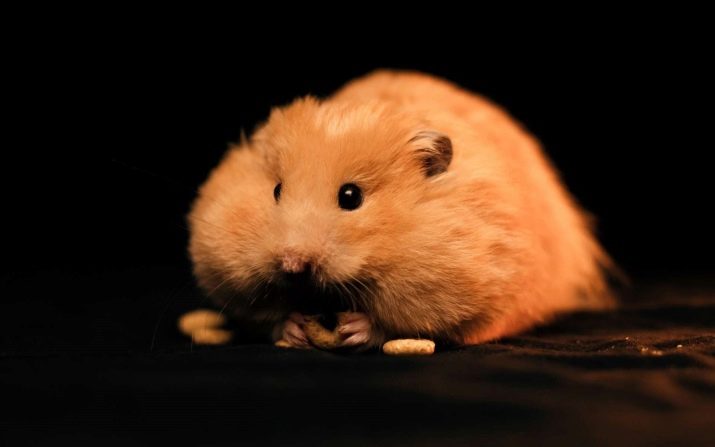
Dzungarian hamsters are very restless and mobile. For them you need to purchase a wheel and tunnels. Animals of this breed can live for a long time both at home and in the wild. They should always be walked at home, as well as monitor their actions. Outwardly, Dzungarian hamsters look like mice. They have a length of about 11 centimeters, a mass of 41-66 grams. The color is brownish-gray, and in winter - silver-gray. The Dzhungar breed also has innate thrifty, so the animals collect and put all their supplies on the cheeks, even if an inedible object (soap, thread, paper) is caught.
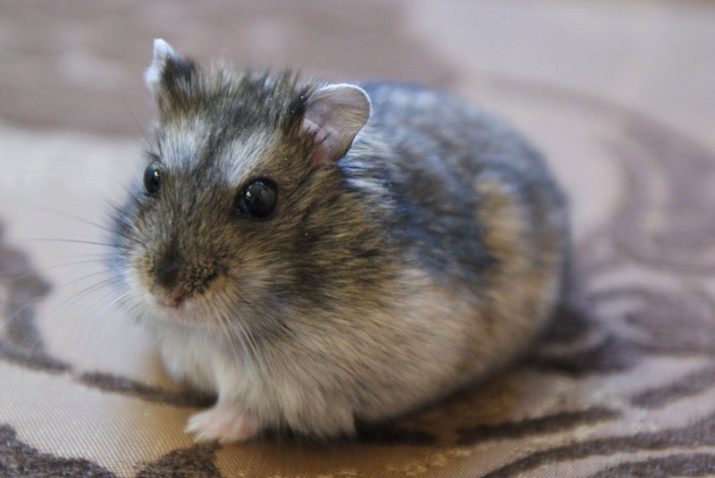
In order for nothing to happen to the hamster, he needs to allocate territory for walking. But before letting the animal out of his home, the apartment should be put in order. Hamsters of the Dzungar breed are small, and only for this reason they live less than the Syrian. Their life expectancy is about 2-2.5 years.
But if the animal is properly maintained, then it can live for 3 years.
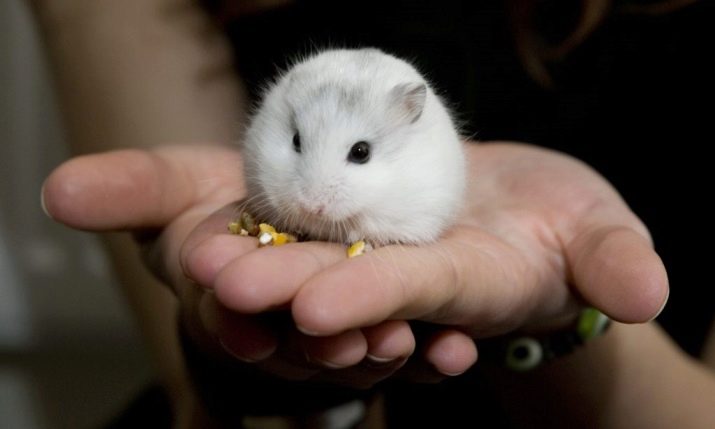
Siberian hamsters are similar to Dzungarian hamsters: they have almost the same sizes and proportions (length - about 11 centimeters, weight - about 26-51 grams). In addition, pets have a blackish-gray color and a brown strip along the back. A characteristic feature is a color change: in winter, the hamster acquires an almost snow-white tone. The animals are unpretentious and calm. The animal can feel good in the cage and the aquarium, it will not need a wheel. Siberian pet leads a nocturnal lifestyle. He does not need cohabitation with relatives. Animals of this breed live up to 3 years.
Dwarf hamsters have a length of 6-8 centimeters, their mass is about 51 grams. This breed has three varieties that differ in color:
- Campbell's hamster - brown;
- Roborovsky’s pet has a golden-white belly;
- Taylor's beast - gray.
Surgut hamster belongs to dwarf. Small pets eat a lot, they even overeat, so you need to look after them. They are mobile animals, and constant walks and space are important to them. Due to the fact that the animals are small, they can live 2 years.
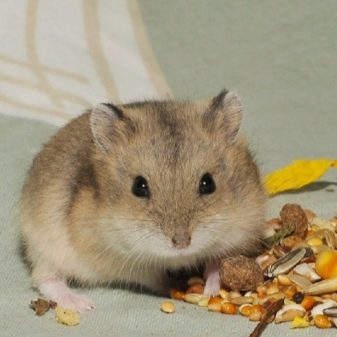
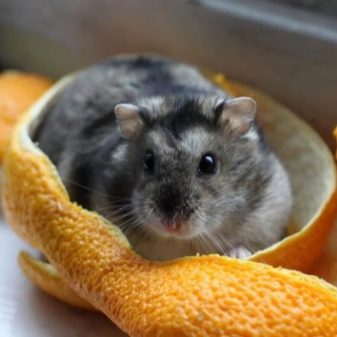
You can increase life expectancy if you provide comfort in the cell.
- The average size at the base of the cell should be 32x72 centimeters.
- A separate house should be located inside the cage, where the animal can hide.
- You will definitely need a small bowl of sand so that the beast can clean its coat. Such a hygiene procedure is beneficial for the animal.
To summarize the life expectancy of pets, read a brief table.
| View | Life span |
| Syrian | 3-4 years |
| Dzungarian | 2-2.5 years |
| Siberian | 3 years |
| Dwarf | 2 years |
Syrian decorative animals live the longest, since they are the most resistant to stress and external factors.
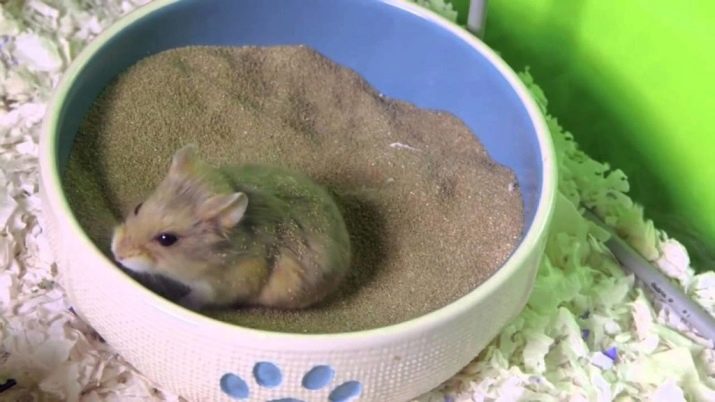
Useful Tips
Pets such as hamsters need good care, so you need to follow some helpful tips from zoologists.
Cell
For a hamster, you need to prepare a cage that is medium in size. The cage should not be high. Inside the pet's dwelling, you can put a wooden house. But the cage itself does not need to be made of wood, because the hamster can gnaw at its home.
A good solution is to purchase a metal cage, but a dwelling made of copper is not recommended. You can also take an unnecessary aquarium instead of a cage. Some owners also use a regular box, and to make the hamster feel comfortable, you can put rags of fabric, soft paper or cardboard inside the box. Thus, the pet will be able to arrange a nest.
The standard sizes of the pet house are:
- height - 13 centimeters;
- width and length - 16 centimeters.
Do not place your pet in a glass three-liter jar, as the animal will feel cramped and stuffy. Inside the house you need to install the wheel, it is necessary for the hamster.
With the help of a wheel the animal maintains physical fitness. If there is no daily run, the pet will be sleepy.

Restroom
The most difficult thing in keeping an animal is the toilet. That there was no smell, the bottom of the house should be retractable. At the bottom you need to put organic glass or plastic. With the help of a drawer, trash can be quickly cleaned and odors eliminated. On a pallet you need to sprinkle sawdust from non-resinous wood species.
Cleaning
Once a week you need to clean the hamster's house. Once 30 days, you need to disinfect the home with a 0.2 percent solution of bleach. The cage needs to be cleaned without disturbing the pet and its supplies. If you throw away supplies, then the animal will experience stress. The only exceptions are perishable products.
The hamster is an absolutely safe pet, it is quite possible to buy it for a child. It is not difficult to take care of and maintain an animal at home. The main thing is to timely care and provide a complete diet.
For how many hamsters live, see the next video.
